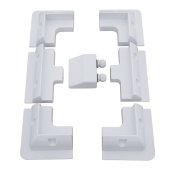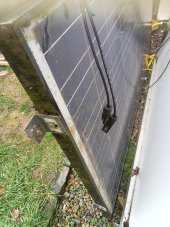Hi all am a new member and looking for a little advice. Been a lurker and soon to take the plunge in removing the existing 100w panel fitted as standard to my caravan.
Reading the great advice here I’ve its better to have a higher voltage system if possible, especially if you live in an area of cloudy conditions which I do. Rather than using 12v style panels, I’ve looking at used panels that presumably have been removed from residential roofs that could fit my caravan roof space. These vary from 250w-400w. They are all in the region of 1.7M X 1M. This looks to be a standard size?
I would be using mounts like below that are then bonded to the roof. Is this to large, would the wind lift the panel whilst travelling ?
Thank you in advance
C

Reading the great advice here I’ve its better to have a higher voltage system if possible, especially if you live in an area of cloudy conditions which I do. Rather than using 12v style panels, I’ve looking at used panels that presumably have been removed from residential roofs that could fit my caravan roof space. These vary from 250w-400w. They are all in the region of 1.7M X 1M. This looks to be a standard size?
I would be using mounts like below that are then bonded to the roof. Is this to large, would the wind lift the panel whilst travelling ?
Thank you in advance
C









